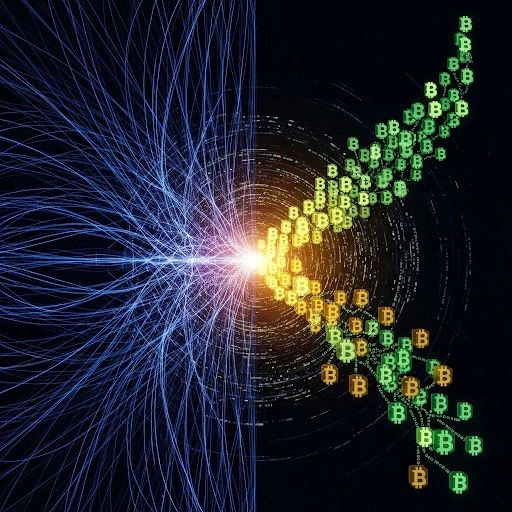
In nature, light always propagates along the “shortest path.” In the blockchain world, Bitcoin’s blockchain also eventually converges into a unique “longest chain.” Between the two, is there some hidden deep isomorphic logic?
Today, we start with optics and quantum mechanics, extend to Satoshi Nakamoto’s Bitcoin design, and then reflect on the fundamental differences between artificial and natural systems.
The traditional methodology of constructing artificial systems by humans is often reductionist:
This method is effective in engineering, programming, and industry, but when faced with complex evolution, nonlinearity, and global consensus, it becomes inadequate.
Nature does not “build by blueprint.” Take optics as an example:
In other words:
Nature’s “determinism” is not the result of a preset path, but the emergence of one from countless possible paths.
When we understand the rules of natural systems, we can see the shortcomings of artificial systems.
Artificial systems should no longer be limited to:
Instead, they should shift toward:
This is the key to moving from reductionism to emergence.
Satoshi Nakamoto’s Bitcoin is the first example of natural emergent logic being embodied in an artificial system.
Bitcoin’s “unique consensus” is not hard-coded by the designer, but emerges naturally through countless explorations of freedom and interference.
Its craftsmanship is highly isomorphic with the photon’s path integral.
Essential logic: Determinism = emergence of uncertain freedoms in the time dimension, rather than a single preset path.
Therefore, Bitcoin is not just a decentralized currency, but a super-formal system. It proves that artificial systems can also, like natural systems, yield unique results through freedom exploration and interference.
Future science and engineering may draw inspiration from this, moving toward “nature-level precision” in artificial constructions.
When we no longer preset answers, but instead allow freedoms to explore over time, the natural determinism of precision will emerge.